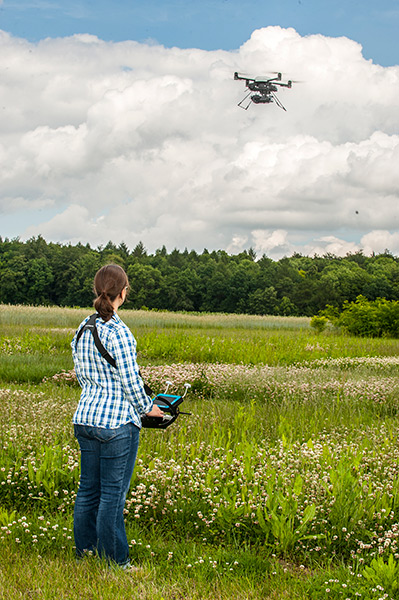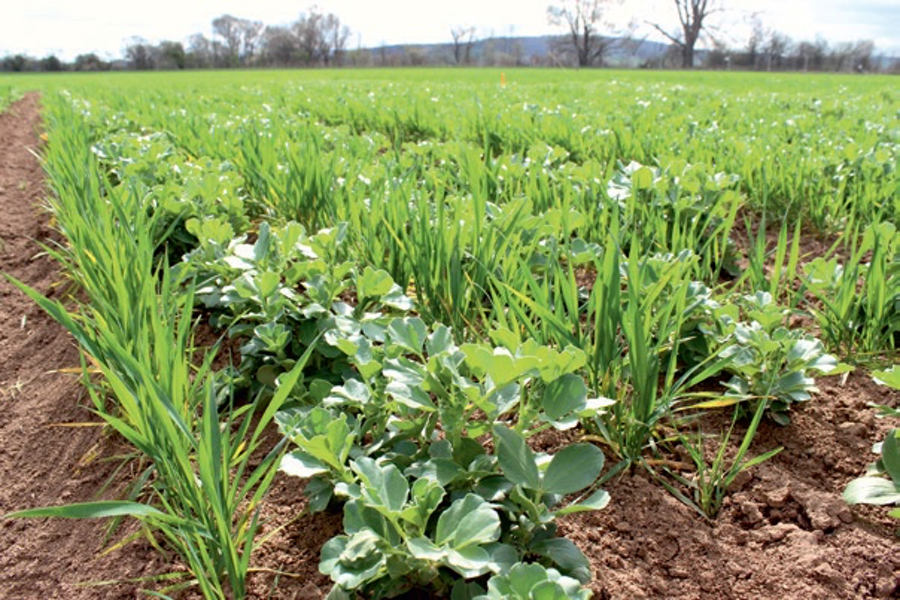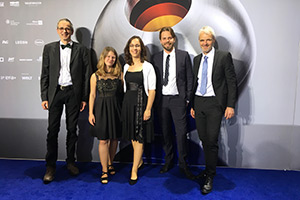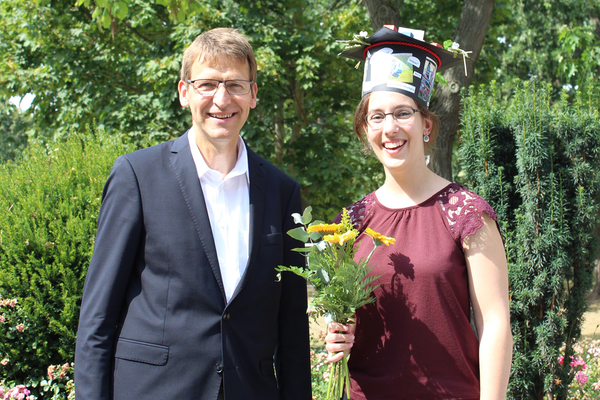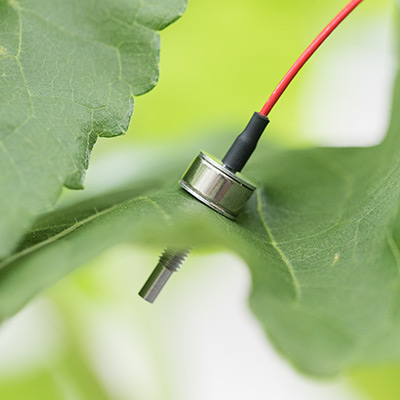Research
Introduction
In future, there is a growing demand for improved concepts to ensure the productivity, sustainability, resource use efficiency and stress tolerance of agricultural systems. A promising option for arable systems is the development and investigation of alternate cropping systems such as the cultivation of mixed crop stands, where stand architecture and alternate rooting may increase the efficiency of both, light and water use as well as nutrient uptake. The intercropping of cereals with legumes is particularly common and introducing N2-fixing legumes into cereal-based crop rotations may result in lower needs for mineral N fertilizer and reduced dependency on external inputs.
Improving water-use efficiency in mixed cropping
Thereby one of the major goals is the identification of genotypes that show superior performance in mixed crop stands. Simultaneously, knowledge of resource-use efficiency (water, light and nutrients) is essential to understand the performance of mixed cropping systems which might lead to improved water-use efficiency. Also, it is necessary to have a closer look at the physiological responses of plants under drought. In this framework, the implications of mixed crop stands on canopy water-use efficiency and drought tolerance are studied.
Remote sensing as useful tool
Within this context, mixtures of winter faba bean with winter wheat as well as white clover with ryegrass and cichory are compared to their respective pure stands in field experiments. For drone-based monitoring of these different crop stands in arable land and grassland new remote sensing methods were established. For the evaluation of important crop stand characteristics, a quadcopter (EagleLive Raptor, EagleLive Systems, Germany) was equipped with a multispectral camera system (ADC Micro, Tetracam Inc., California) which is able to image visible and near-infrared properties of the crop stands at high spatial resolution. The collected data allow evaluation of Normalized Difference Vegetation Indices (NDVIs) which provide information about biomass production und photosynthetic activity of different crop stands in the field within a short time frame. In parallel, a thermal camera (PI 400, optris, Germany) provides canopy surface temperature information for estimation of canopy water use.
The examination of crop stands throughout the growing cycle also focuses on identifying key indicators of tolerance to drought events. Therefore two separate approaches are used to measure the parameter water-use efficiency (WUE) of each crop stand during the first two years of the field experiments. Stable isotope analysis (13C) in plant tissues is used to measure intrinsic WUE in critical vegetation periods. In addition, net CO2 exchange and evapotranspiration as assessed by gas exchange of the different crop stands are directly measured (GFS 3000, Heinz Walz GmbH, Germany) using a mobile canopy chamber.
Water deficit in the greenhouse
In order to identify genotype-specific physiological properties of stress adaptation and the tolerance of different winter faba been genotypes to temporal water deficit in more detail, additional experiments were conducted under controlled environmental conditions in the greenhouse. Various genotypes of winter faba bean (Vicia faba L.) were cultivated and subjected to drought stress. In a first set of experiments (Exp1) plants were grown in nutrient solution and water deficit was induced by adding PEG 6000 to the solutions. In a second set of experiments (Exp2) the performance of two of these genotypes (i.e., the most and the least tolerant) was tested in pure stands as well as in mixtures with winter wheat. Here, plants were grown in soil substrate and drought stress was induced by deficit irrigation.
Architecture of winter wheat and ryegrass determine correlation with NDVI
A first set of promising results was obtained in 2015. For this vegetation period it was shown by gas exchange measurements that in grassland, white clover was highest in net-photosynthesis and thus most efficient in water use while the mixture of white clover and ryegrass had lower water-use efficiency. Concurrently the arable crops had similar water-use efficiencies, only showing a tendency towards the end of the vegetation period that net-photosynthesis and therefore also water-use efficiency was higher in mixed cropping plots of winter faba bean and winter wheat.
Based on spectral screening of the crop stands via quadcopter the development of the vegetation was visualized. In arable crops during summer 2015 the NDVI images reflected lower values and thereby lower stand density in winter wheat while winter faba bean and their mixtures had significantly higher values and a later ripening. Correspondingly, confirming the hypothesis, the spectral indices of mixed stands in arable crops were markedly increased compared to the calculated theoretical mean of both pure stands. Grain yield correlation with NDVI of winter faba bean was restricted by a generally higher leaf area index: beyond a certain NDVI ceiling value (close to 1), the NDVI technology cannot distinguish differences in stands with very high biomasses. However, due to a generally lower leaf density in wheat stands compared to faba bean, NDVI values of winter wheat were reflecting grain yield the most. For 2016 there is a larger data set available to investigate the index development for the whole vegetation period during spring and summer showing an evolving curve starting from April, when soil cover is closed, to the ripening phase in July.
Also in grassland, mixtures of white clover and ryegrass had higher NDVI values than the calculated theoretical mean of monocultures. Still, after applying 240 kg N/ha to ryegrass highest NDVI values were obtained. Generally, the availability of nitrogen seems to have an important influence on the development of the spectral reflectance by the canopy. However, plant architecture plays another crucial role in the reflectance patterns. White clover, similar to winter faba bean, has horizontally orientated leaves which reduce the correlation effect of NDVI with dry matter yield. And, similar to winter wheat, ryegrass has erectophilic leaves which allow a higher correlation between NDVI and dry matter yield of fertilized and non-fertilized treatments.
Species mixtures promote biomass production
It was shown in the greenhouse Exp1 (conducted under controlled conditions in nutrient solution) that water deficit caused impaired production rates resulting in lower biomass and leaf area. Genotypes with highest and lowest biomass production were then tested for their performance in a mixed cropping system (Exp2). Here, one genotype showed higher biomass production in the mixture than in pure stands. Under deficit irrigation biomass was reduced in all treatments with no differences between mixed and pure stands. A detailed analysis of traits related to stress tolerance (e.g., physiology of leaf, and canopy gas exchange, water-use efficiency, oxidative stress) was performed.




